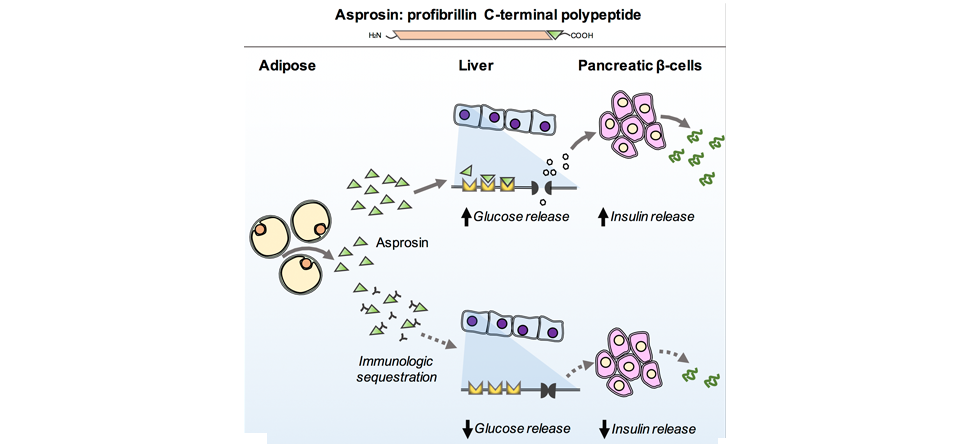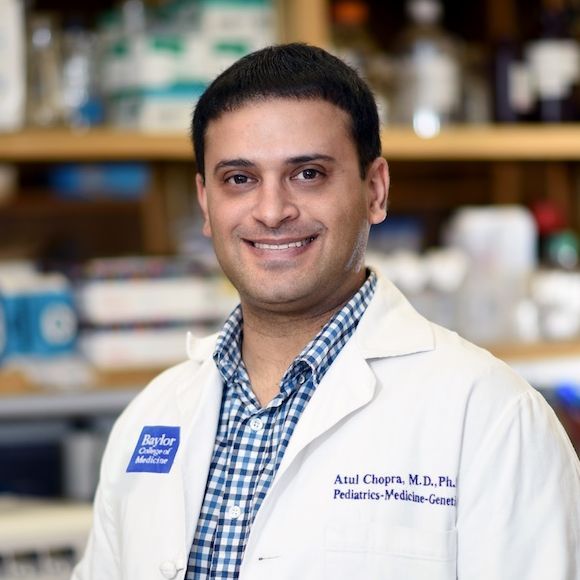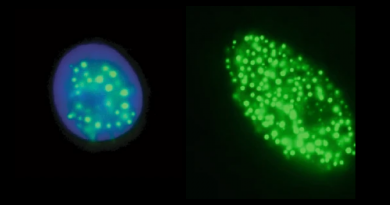Discovery of the new hormone asprosin could have potential implications in treatment of diabetes

By Dipali Pathak
When Dr. Atul Chopra began studying a rare genetic condition called neonatal progeroid syndrome (NPS) he did not suspect that his discoveries could potentially affect the lives of millions of people living with a different condition, type 2 diabetes. The findings appear in the journal Cell.
NPS keeps the body from accumulating fat, among other symptoms.Chopra, a medical geneticist at Baylor College of Medicine, and senior author of the report, first identified two patients with this rare disorder in 2013. When Chopra began his studies only a handful of patients had been described to have this disorder worldwide and its cause was unknown.
At that time, whole genome/exome sequencing was only just being used to find answers for previously unsolvable medical/genetic mysteries. Chopra’s long-standing interest was in understanding disorders of energy metabolism, and his NPS patients with extremely low levels of body fat piqued his imagination. Both patients had lived their entire lives with this “mysterious” disorder and Chopra, recognizing that technology was finally available to attack this problem, invited both to the genetics clinic at Texas Children’s Hospital for initial interviews and tests.
Using whole exome sequencing, Chopra and colleagues discovered the genetic mutation that appeared to be responsible for NPS. However, how that mutation resulted in the disorder was still unknown. Taking this problem to the laboratory, the researchers were able to figure out that these mutations prevented the patients from generating a previously unknown hormone. This newly discovered hormone, named asprosin, appears to be generated by fat. It travels to the liver where it instructs the liver to release glucose into the blood stream. NPS patients with abnormally low levels of asprosin are unable to do this and display low blood glucose and insulin.
In the opposite direction, patients with obesity/diabetes who have high blood glucose and insulin display higher than normal levels of asprosin. Using this information, the researchers determined that they could develop an antibody against it, and use that antibody to neutralize asprosin, a process called immunologic sequestration. This way they could potentially reduce the amount of glucose released by the liver, resulting in the pancreatic cells needing to release less insulin.

“We began to wonder, could this be a way to treat diabetes?” said Chopra. To test this concept, they treated diabetic mice with this antibody and found that even a single dose of the antibody worked well to reduce their insulin levels back toward the normal range. When such mice were treated for a longer period of time, their insulin resistance completely normalized.
“This result brought us full circle. We started with an extremely rare genetic disorder, and using information learned from those patients, discovered a new hormone that can be targeted to treat a different disease that affects many more people. If humans with diabetes respond the same way to the asprosin antibody that diabetic mice do, this discovery could result in a new treatment for diabetes, which affects millions of people,” said Chopra, who also is a Caroline Weiss Law scholar and assistant professor of molecular and cellular biology and of molecular and human genetics at Baylor.
“Therein lies the value in studying rare human genetic disorders. Sometimes such an endeavor can impact many more people beyond the original small cohort of patients one began with, said Chopra.”
One of the NPS patients this story started with, Abigail Solomon of Austin, Texas, is very excited about these findings.
“Dr. Chopra’s work not only paves the way to find a treatment for people with my disorder – NPS, something I have lived with my entire life – but also a treatment for diabetes. I feel proud and honored to have been given an opportunity to participate in this process,” said Solomon, who is now a student at The University of Texas at Austin.
Others who took part in the study include Chase Romere, Clemens Duerrschmid, Juan Bournat, Petra Constable, Mahim Jain, Fan Xia, Pradip K. Saha, Bokai Zhu, Brian York, Poonam Sarkar, David A. Rendon, M. Waleed Gaber, Scott A. LeMaire, Joseph S. Coselli, V. Reid Sutton, Nancy F. Butte and David D. Moore of Baylor; Maria Del Solar from the Icahn School of Medicine at Mount Sinai and Dianna M. Milewicz of the McGovern Medical School at The University of Texas Health Science Center at Houston .
The work was supported by the Baylor-Johns Hopkins Center for Mendelian Genomics, funded by the NHGRI (U54HG006542), the Mouse Metabolic Core at Baylor, funded by the NIH (P30 DK079638), the Thoracic Aortic Disease Tissue Bank at Baylor, funded by the NIH (P50 HL083794). The Vanderbilt University Hormone Assay Core is supported by NIH grants DK059637 and DK020593. The Genotype-Tissue Expression (GTEx) Project is supported by the Common Fund of the Office of the Director of the NIH (additional funds were provided by the NCI, NHGRI, NHLBI, NIDA, NIMH, and NINDS). Chopra’s laboratory is supported by the NIDDK (1K08DK102529), the Chao Physician-Scientist Award, the Caroline Weiss Law Scholar Award for Academic Excellence and a departmental laboratory startup package.



